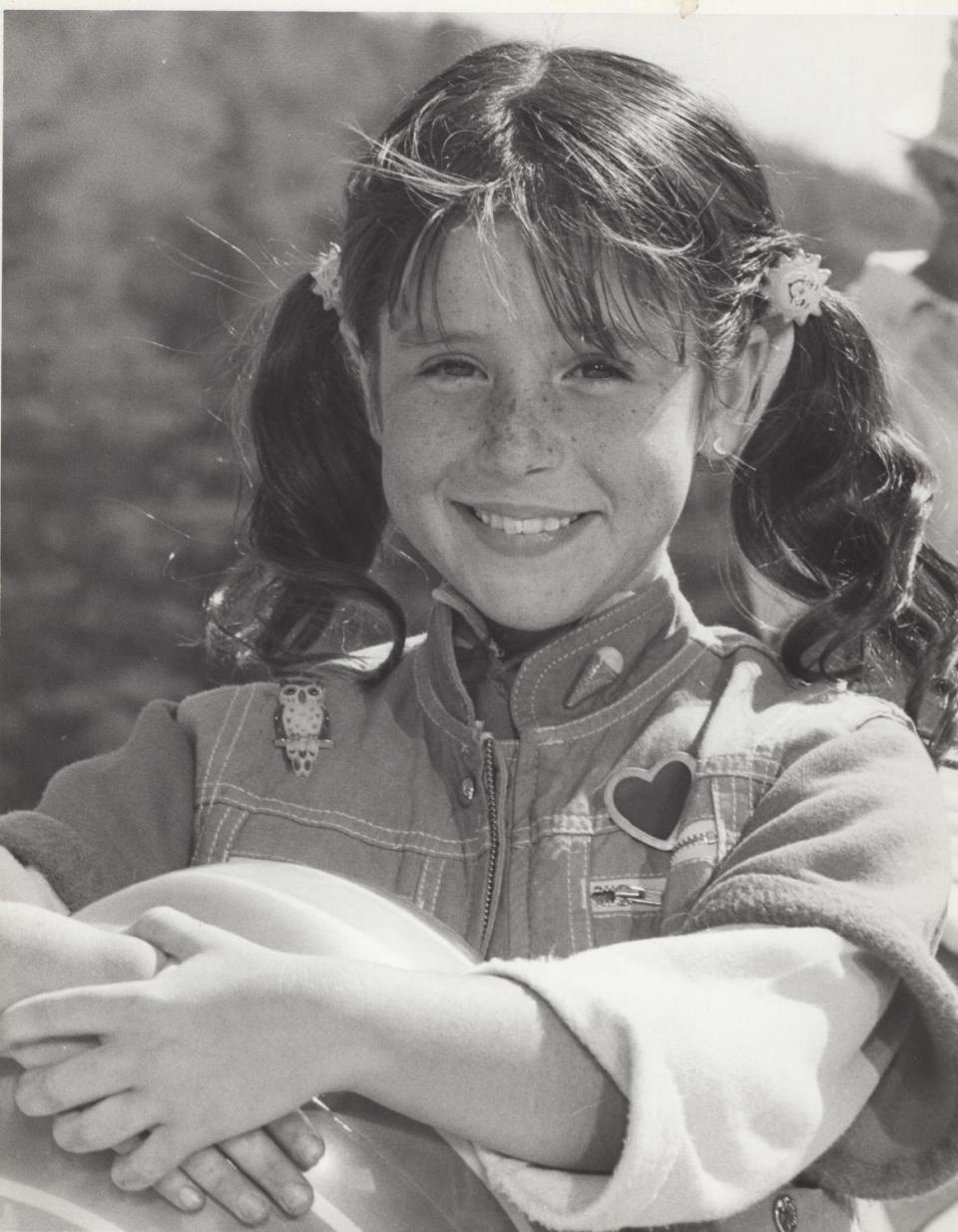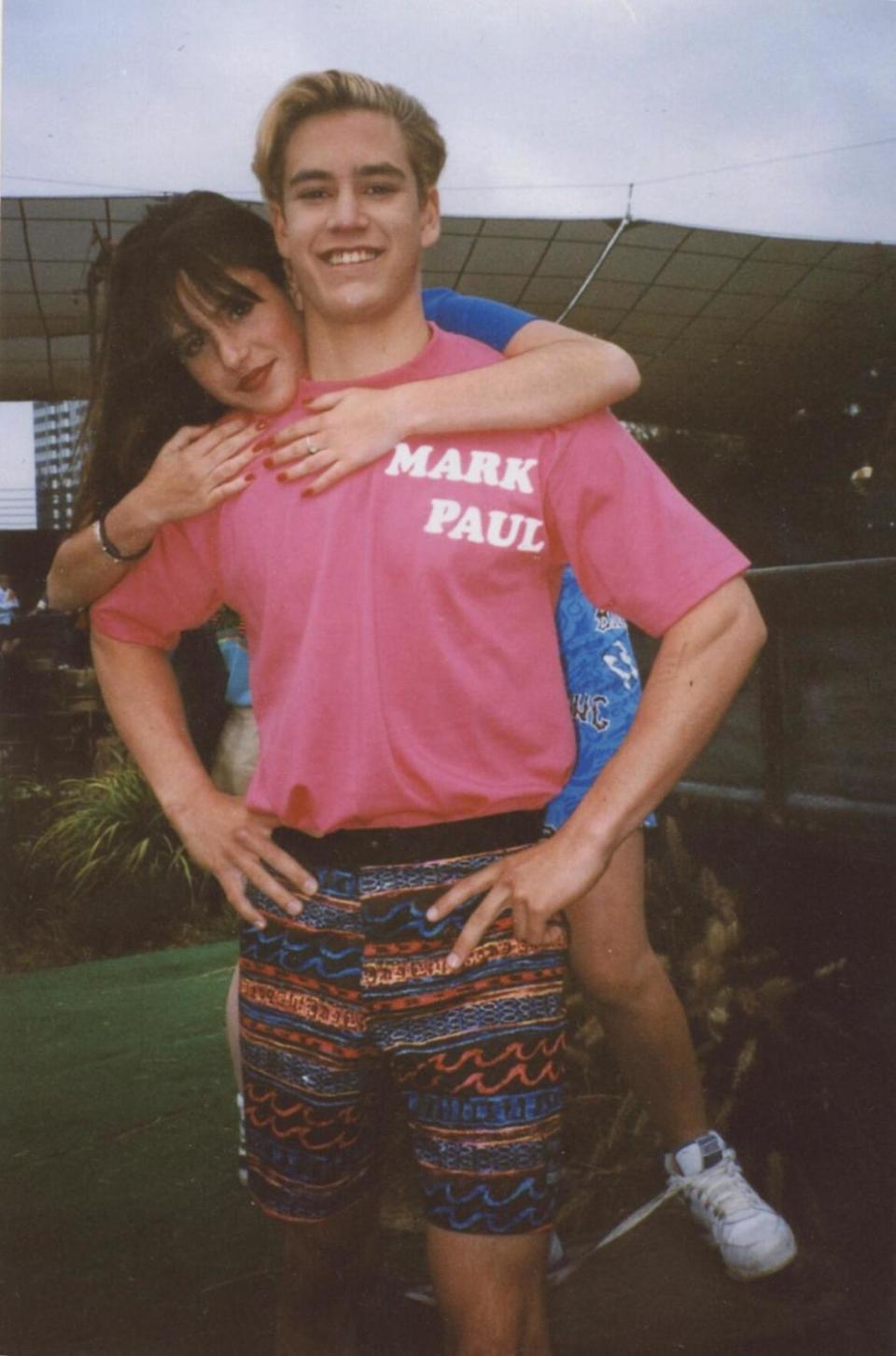Soleil Moon Frye 'lost sight' of herself. Facing her darkest memories brought her back

Soleil Moon Frye never had a “Wrecking Ball” moment.
At the height of her fame on "Punky Brewster," she teamed up with then-First Lady Nancy Reagan’s “Just Say No” campaign to urge kids to resist drugs. When the sitcom came to a close in 1988, she returned to school in the San Fernando Valley and spent her summers at camp in Malibu. In interviews, she spoke proudly about being a virgin. And after being taunted by boys who called her “Punky Boobster” because of her size 38DD chest, she got a breast reduction at age 15, using the experience as a platform to address teenage body insecurities.
So why didn’t Moon Frye feel the need to make a theatrical, public break with her squeaky clean child star image?
Because she was actually like Punky. Relentlessly upbeat. So self-possessed that she was somehow able to pull off a rainbow wardrobe. Always eager to solve a problem — even one as daunting as administering CPR to her best friend, who got locked in a refrigerator during a game of hide-and-seek.
“Punky and Soleil were so intertwined,” said Brian Austin Green, who became friends with Moon Frye as a fellow kid actor before he was on the TV series “Beverly Hills, 90210.” "The character was so extreme compared to society, but Soleil, being as kind and loving as she was, I think she opened people up to the experience of Punky. No one was like, 'What the f— is wrong with this girl? Why is she skipping everywhere and wearing different colored socks?’”
So it should come as no surprise that when Moon Frye was approached about reprising the iconic role, she didn't hesitate. She was already in the midst of revisiting her youth when conversations about a “Punky Brewster” revival — recently launched on NBCUniversal’s new streaming service, Peacock — began a few years ago.

Shortly after her 40th birthday, the actress started to question her identity. She’d gotten married at age 22 and went on to have four children with her husband, producer Jason Goldberg.
“I’m so proud to be a mom, but I started to wonder: 'Who am I, in addition to my children whom I love so much?'" said Moon Frye, now 44. “I had a really unorthodox upbringing that was amazing and so colorful, being raised by a single mom. But that led me to desire some tradition — the love and joy of family. And I became so focused on giving my all to being a mom and a wife that I lost sight of the artist inside me.”
Moon Frye was sitting at her place in Venice, a couple blocks from the beach, with stacks of her old journals surrounding her. As a kid, she relished documenting her life: She begin keeping a diary at age 5, recording audiotape at 12 and filming with a video camera at 14. She’d always held onto them — they were well-preserved in big Tupperware containers — but it wasn’t until 2017 that she felt called to revisit them. It was a journey, she said, that has not only produced a new documentary — Hulu’s “Kid 90,” out March 12 — but also led her back to herself.
Moon Frye spent nine months combing through hundreds of hours of her footage to create the film, which offers an intimate look at what it was like to be young and famous in an era before social media. The actress — who was cast as Punky at age 7, beating out 1,000 girls to play the precocious youngster — became something of an unofficial ringleader of kid stars in Hollywood . Her circle of friends included Green, Mark-Paul Gosselaar, David Arquette, Stephen Dorff and Heather McComb, all of whom sat for interviews in “Kid 90” to reflect on their adolescences.
She took her Sharp camcorder everywhere: On group outings to Magic Mountain, to the hospital before her breast reduction, to a field in Antelope Valley where she tripped on mushrooms. Picking up the camera, Moon Frye said, was her reaction to a childhood spent with the lens focused on her: “I wanted to flip the perspective and document everyone else. The camera became a shield between me and others, in a way.”

Gosselaar — who, like Moon Frye, also recently returned to his teen roots on Peacock’s “Saved by the Bell” reboot — befriended the actress after guest starring on a 1988 “Punky” episode.
"Being with other actors, it didn’t even register that she had her camera out," he said. "We all banded together, because the market wasn’t saturated with young actors yet. So I think she and I are very similar in that we feel we had pretty normal childhoods. I did stupid s—. I hear now, ‘Oh, Justin Bieber egged a house.’ I did stupid s— like TP-ing a house on Halloween when I was 16, but nobody took a photo. And back then, you couldn’t see how popular you were. I didn’t wake up the morning after my show premiered to find out how we did in the demos. Now, you know how many followers and likes you have.”
Nostalgia for that period was part of the reason Hulu was interested in co-financing “Kid 90.” Belisa Balaban, the streamer’s vice president of original documentaries, said she felt the behind-the-scenes glimpse into the 1990s would play well with the company’s large millennial audience.
“But I also thought that Soleil’s story was both specific and very universal for young women coming of age,” said the executive. “At a very young age, she was cast into a role and was the object of a lot of interrogation and scrutiny. As an adult woman, she can take control of the narrative. There’s something deeply powerful about the fact that she is the author of this work.”

At first, Moon Frye wasn’t even sure she wanted to be a part of the documentary, envisioning it as a piece that would explore “the last decade of privacy.” But as she spent time reacquainting herself with her teenage persona, she was forced to confront the darker reality of experiences she had blocked from her memory.

 Yahoo Autos
Yahoo Autos 